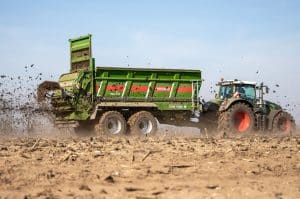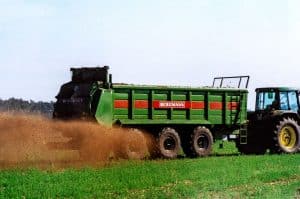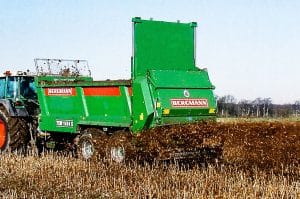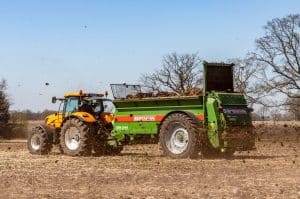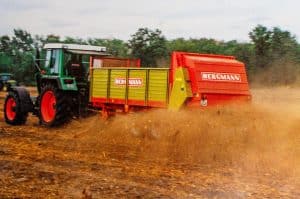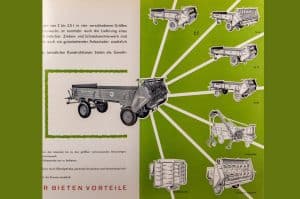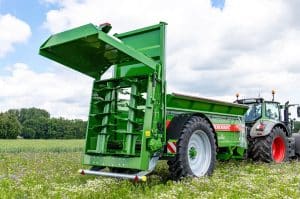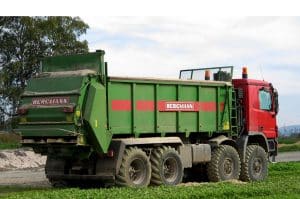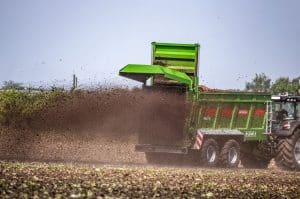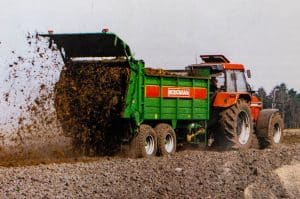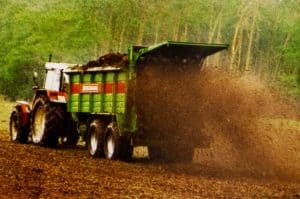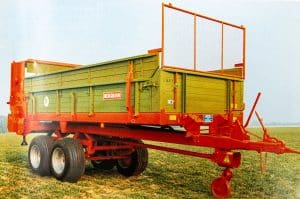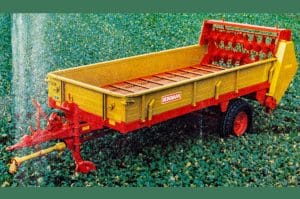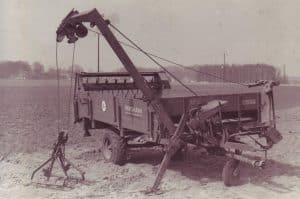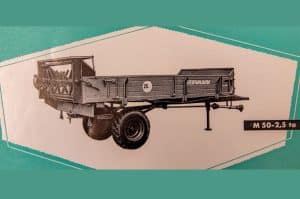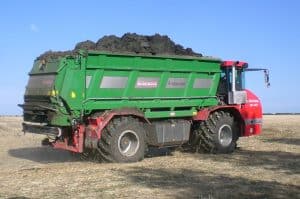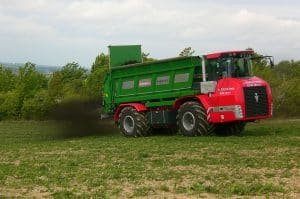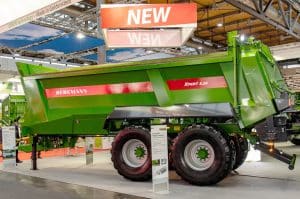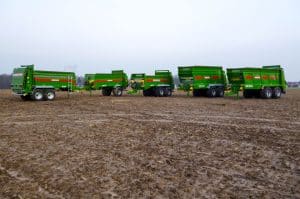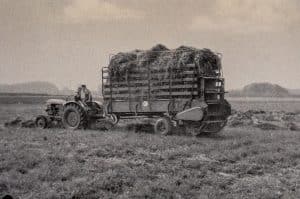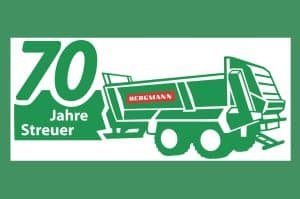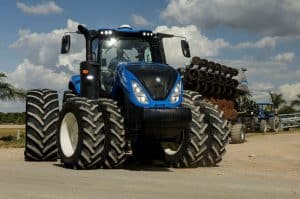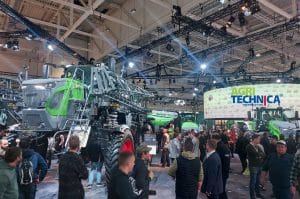Bergmann from Germany celebrates 70 years of design and production of its manure and universal spreaders. Throughout this period and to this day, the company has been a key player in the field of organic spreading.
The success story of Bergmann spreaders began in 1954 with the M series, equipped with one or two horizontal tine beaters. In 1960, the range was extended with the semi-portal add-on loader L 100, which loaded dung, straw, hay and much more to allow a more versatile use of the manure spreaders. In 1962, the spreaders were joined by five more M manure spreader and multi-purpose trailer models. These had a higher load and a one- or twin-axle chassis. To increase the scope of use of the M series manure spreaders and multipurpose wagons, the AL 10 add-on loader was developed that allowed grass, straw, beet foliage and much more to be loaded.
From the mid-1980s, the M 92 was available as a tandem spreader with a spring suspension. In the 1980s, a new generation of M with the single-axle spreaders was born, as well as tandem models with spring suspension. In 1994, the Pilotbox was introduced. Used to this day with slight modifications, it allows convenient operation of the spreader via a central operator box. Before that, it could be operated only via the control units of the tractor. From 1995, Bergmann has been using only 14 x 50 mm round-link steel chains as scraper floor chains. With a breaking load of 25 t per chain, these remain the benchmark for scraper floor durability to this day.
In 1998, the Vario body swap chassis joined the product family, allowing the use of a range of bodies, such as spreaders, forage harvesters, tanks or tippers with just a single chassis. This was also the start of chassis with hydraulic axle compensation, tridem chassis, and mounted weighing systems for spreaders. Thanks to a new optional feature introduced in 1999, the electromagnetic ME control panel was now connectible to the UNI-Control S automatic spread rate control system. In 2001, the first spreaders with conical all-steel bin were produced. This bin had many advantages over bins with parallel side walls: reduced side wall wear, a reduced power demand from the tractor, no material compaction and blockages in front of the milling or spreader unit, reduced stress on the scraper floor chains and drive, and an improved spreading pattern.
Bergmann also presented the TSW A 19 spreader mounted on a Mercedes Actros, the first self-propelled machine with GPS control for exact spreading. In 2009, the M 1080 manure spreader and the TSW 6230 S with hydraulic chassis was introduced, as well as ISOBUS operation. In 2015, the TSW weighing spreader was introduced. Prior to that, combinations of Vario chassis and spreader body equipped with weighing systems were already available as custom-builds. Highlight at Agritechnica 2019 was the new, patented V-Spread wide spreading unit, which can be identified by its arrangement of spreader disks in a V-shape perpendicular to the direction of travel and which allows working widths of up to 36 m, depending on the material.
Also new in the range was the 2-Spread hybrid spreader unit with its two large, vertical beaters. Latest addition to the Bergmann range is the XPERT demonstrator. Design of this new generation spreaders is based on a completely new concept and is set to be gradually introduced to the market starting in autumn 2025. The XPERT series also marks the introduction of the ISOBUS TIM for organic fertiliser spreaders, which implements two functions: SpeedControl for adapting the spread rate by varying the tractor’s driving speed while maintaining a constant scraper floor speed; and PTOControl, which offers different options for accessing the tractor’s PTO shaft.

![RightSpot Ad Template Digital-1400×190-px[76] Ag Leader RightSpot](https://world-agritech.com/wp-content/uploads/elementor/thumbs/RightSpot-Ad-Template-Digital-1400x190-px76-r316mmc0hgoob9qxmklllnnbxta1nlj7t2vjkoyeek.png)


